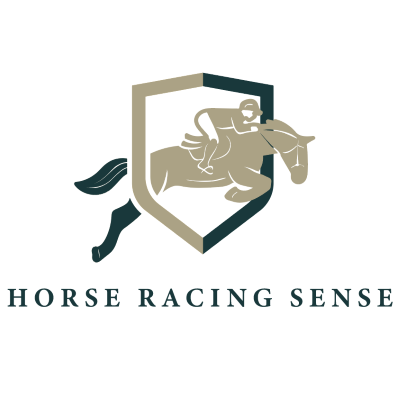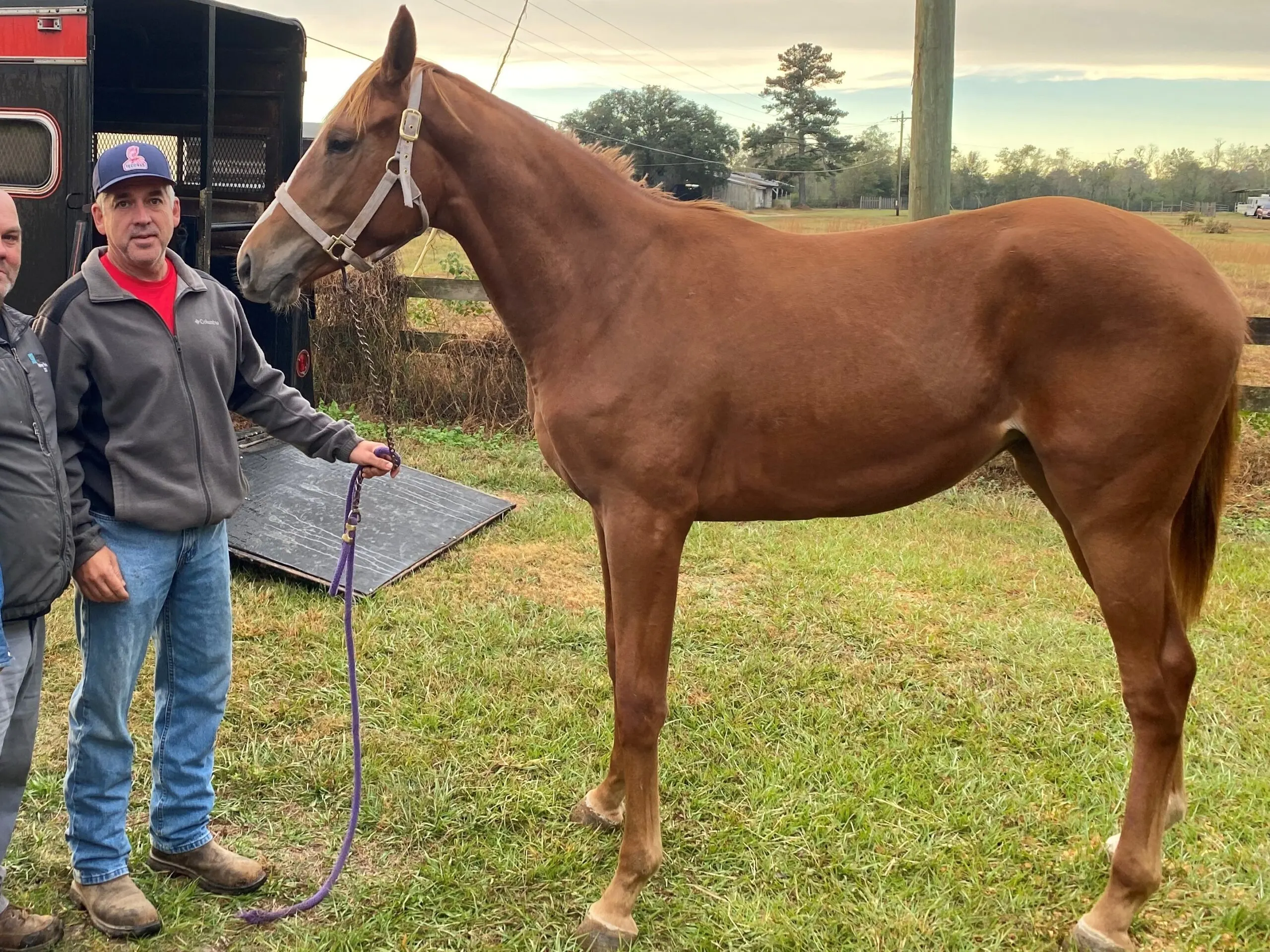Last updated: March 9, 2024
From the classic blacks to shades of gray and everything in between, the world of horses is a kaleidoscope of colors, each with a unique genetic blueprint. Having owned horses of nearly every hue and the current owner of six horses, my journey through the equine spectrum has enriched my understanding and appreciation of their beauty and complexity.
In this article, we dive head-first into the world of horse colors, exploring the genetics that paint their coats and the breeds that carry these colors. With vivid pictures to bring each color to life, this guide is a window into the spectrum of horse coats. Whether you’re a seasoned equestrian, a breeding expert, or someone who simply loves horses, I invite you to join me on this journey.
Black Horse Color

- Black horses possess a coat that’s uniformly deep, dark, and rich in color.
- True black horses do not lighten in the sun and maintain their color year-round.
Genetics:
- Black coats are created by a dominant gene (E) that suppresses the red pigment, allowing only black pigment to be expressed.
- A horse must have two copies of the black gene (EE or Ee) to be visually black.
Horse Breeds Where Black Coats Are Most Common
- Friesian: Known for its majestic black coat and graceful movement.
- Black Forest Horse: A draft breed with a striking black coat, often with a flaxen mane and tail.
- Percheron: While they come in grey too, black Percherons are iconic in the draft horse world.
Did You Know?
- Black was once considered an undesirable color in some cultures, associated with evil or bad luck, but today, it’s celebrated for its elegance and beauty.
Bay Horse Color

- Bay horses display a wide variety of shades, from light sandy tones to deep, dark mahogany.
- The core characteristic is the reddish-brown body with black “points” – mane, tail, lower legs, and ear edges.
Genetics Behind Bay:
- The bay color is produced by the Agouti gene (A) acting on the black base coat, restricting black pigment to the points.
- Requires the presence of a black base (E) gene; thus, a horse must have at least one copy of both the black (E) and Agouti (A) genes to be bay (E_A_).
Bay Coat Color Variations:
- Blood bay
- Bay dun
- Sandy bay
- Perlinos
- Bay roan
- Amber champagne bay
- Silver bay
- Bay pinto
- Leopard bay
- Wild bay
- Buckskin
Commonality Across Breeds:
- Bay is one of the most common coat colors in horses, found in almost every breed.
- Breeds where bay is especially prevalent include Thoroughbreds, Quarter Horses, and Warmbloods.
Chestnut Horse Color
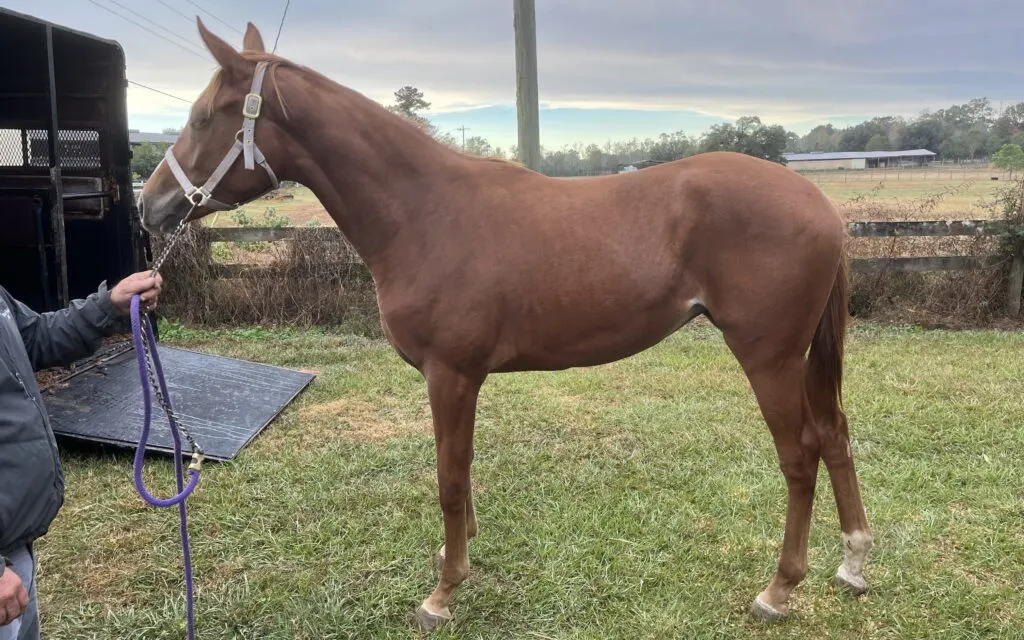
- Ranges from light, golden shades to deep, rich reds.
- There are no black points; the mane and tail can be the same color as the body or lighter.
Genetics Behind Chestnut:
- Result of the recessive “e” allele on the Extension gene: a horse needs two copies (ee) for the chestnut color to express.
- The absence of black pigment allows only red tones to show.
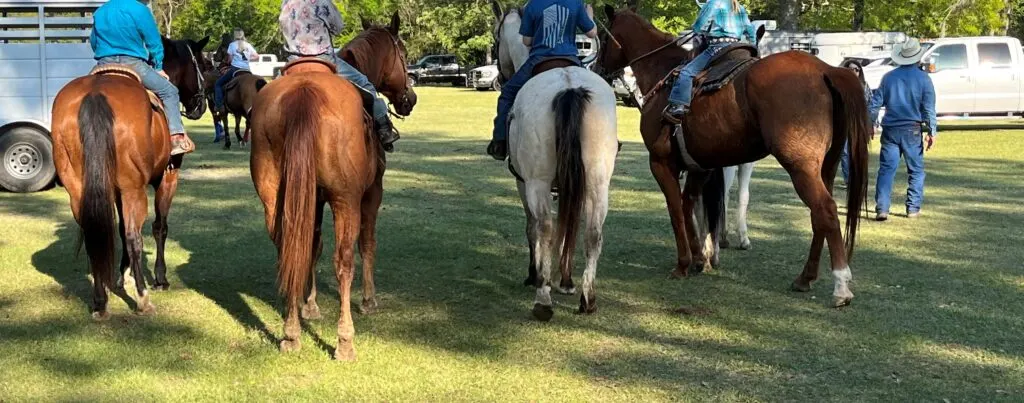
Variations:
- Light Chestnut: Pale, gold-toned coat.
- Liver Chestnut: Dark, almost chocolate-colored.
- Flaxen Chestnut: Bright red body with a strikingly lighter mane and tail.
Foundation in Breeds:
- Chestnut is a primary color in many horse breeds due to its genetic simplicity.
- Common in breeds like the American Quarter Horse, Morgan, and Arabian.
Interesting Fact:
Gray Horse Color
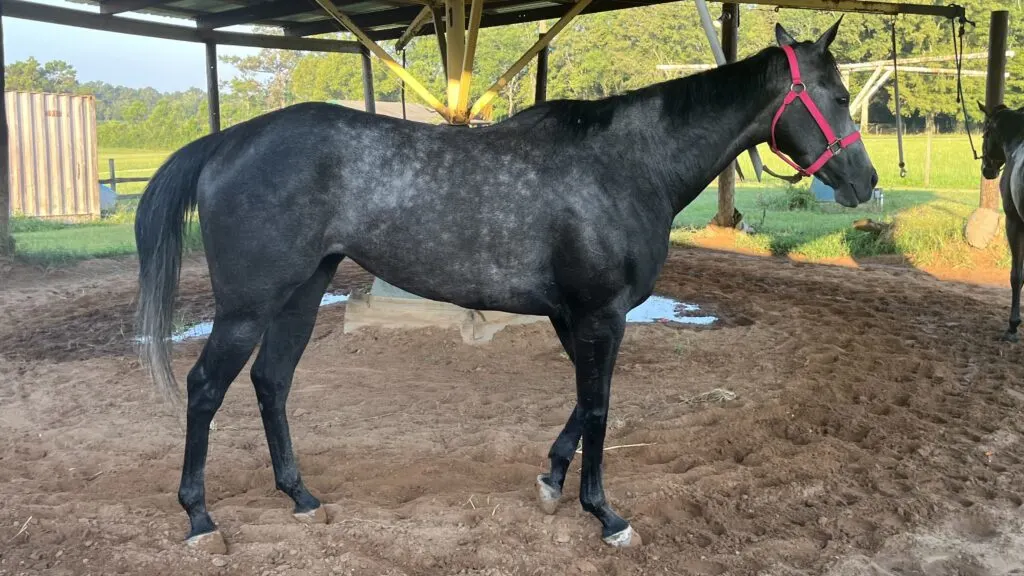
- Gray horses are born with a darker coat that lightens as they age, eventually turning fully gray or white.
- This graying process can start as early as one year of age and continue throughout the horse’s life.
Genetic Background:
- Caused by a dominant gene (G). A horse with one or two copies of this gene will turn gray over time.
- The gray gene affects all base colors, meaning a horse of any initial color can become gray if it carries this gene.

Dapple Gray Horses
Dapple gray horses have gray coats with dark rings across most of their body. The circles are dapples. Thus, their name is a description of the color pattern.
Prevalent Gray Breeds:
- Andalusian: Renowned for its elegant gray coat, a hallmark of the breed.
- Lipizzaner: Famous for performing in the Spanish Riding School, these horses are almost always gray.
Health Considerations:
- Gray horses are more prone to developing melanomas, especially as they age. While often benign, these tumors require monitoring.
Interesting Fact about Gray Horses.
- The graying process is unique to each horse, leading to a wide range of patterns and shades of gray over their lifetime, from dappled gray to flea-bitten and even rose gray.
Palomino Horse Color

- Palominos boasts a stunning golden coat, ranging from light cream to rich, dark gold.
- Their mane and tail are often several shades lighter, typically white or cream, creating a striking contrast.
Genetic Makeup:
- The palomino color results from a single cream dilution gene (Cr) acting on a chestnut base coat.
- This dilution gene lightens the red pigment but not to the extent of making the horse white, hence the golden appearance.
Prevalent Palomino Breeds:
- American Quarter Horse: The majority of Palomino horses are in the Quarter Horse breed, with estimates suggesting that over 50 percent of all Palominos belong to this breed.
- Tennessee Walking Horse: Palominos in this breed are celebrated for their smooth gaits and flashy appearance.
- Morgan Horse: This breed showcases the palomino color in its full glory, combining beauty with athleticism.
Did You Know?
- The exact shade of gold can vary significantly depending on factors like diet, season, and genetics, making each palomino horse unique.
Buckskin Horse Color
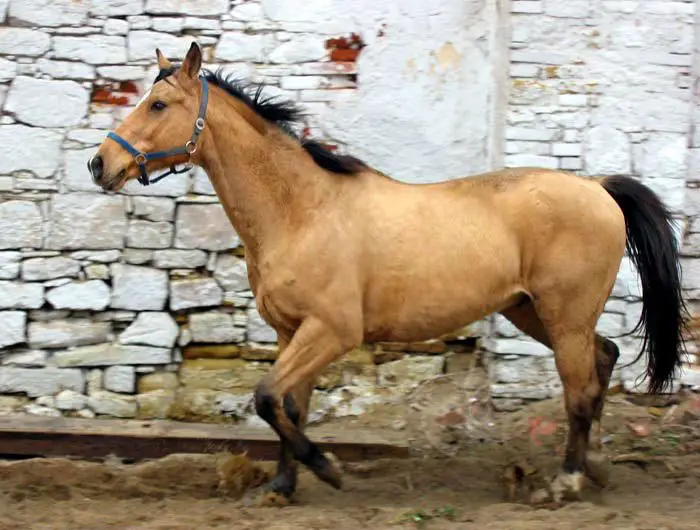
- Buckskin horses display a warm, tan, or gold coat with black points—mane, tail, ear edges, and lower legs.
- The coat does not lighten or darken significantly with the seasons, maintaining its rich hue year-round.
Genetic Causes:
- The buckskin color is produced by a single cream dilution gene (Cr) acting on a bay base coat.
- Unlike palominos, buckskins have the Agouti gene that restricts black pigment to the points, combined with the cream dilution effect.
Differences from Dun:
- While similar in appearance, duns have a “dun dilution” gene leading to primitive markings like dorsal stripes, which buckskins lack.
- Buckskins have a uniform coat color, whereas duns often exhibit a more muted tone and additional markings.

Common Buckskin Breeds:
- American Quarter Horse: Buckskins are prized for their beauty and versatility in this breed.
- Spanish Mustang: This breed showcases the buckskin color, reflecting its rich heritage and endurance.
- Norwegian Fjord: Known for dun colors, but buckskin variations exist, highlighting the breed’s ancient lineage.
Dun Horse Color
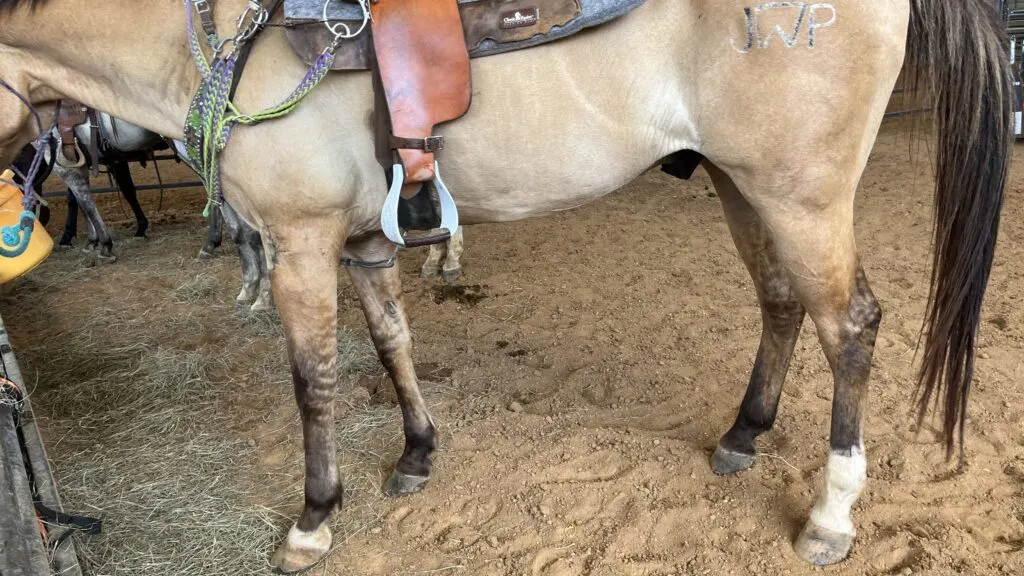
Dun Characteristics:
- Dun horses are known for their striking coat colors, ranging from sandy yellow to reddish-brown, all featuring distinctive “primitive” markings.
- Key features include a dorsal stripe running down the spine, leg barring, and sometimes shoulder stripes or face masks.
Genetic Basis:
- The dun coloration is caused by the dun dilution gene, which affects both red and black pigments but also leaves the primitive markings undiluted.
- This gene is dominant, meaning that only one copy is needed for the dun characteristics to be expressed.

Examples in Breeds:
- Norwegian Fjord: One of the most recognizable dun breeds, typically showing all the classic dun markings.
- American Quarter Horse: Duns are found in this versatile breed, appreciated for both their beauty and athleticism.
- Highland Pony: This sturdy breed often showcases the dun color, highlighting its rugged appeal.
Historical and Cultural Significance:
- Dun horses have been depicted in ancient art, suggesting their presence and value in early human societies.
- The primitive markings are thought to be reminiscent of wild ancestors, linking duns to a rich evolutionary history.
Did You Know?
- The dun gene is ancient, with evidence of dun-colored horses dating back thousands of years in cave paintings and archaeological finds.
Roan Horse Color

- Roan horses exhibit a unique mix of colored and white hairs evenly distributed across the body, creating a stunning, frosted appearance.
- The head, mane, tail, and lower legs often remain solid in color, contrasting with the lighter body.
Genetic Basis:
- Roan coloration is caused by a dominant gene (Rn) that modifies the base coat color, adding white hairs to it.
- This gene can be present on any base color, leading to variations such as red roan, blue roan, and bay roan.
Roan Color Variations:
- Red Roan: A chestnut base with a mix of red and white hairs.
- Blue Roan: A black base with a mix of black and white hairs, giving a bluish tint.
- Bay Roan: A bay base with a mix of red, black, and white hairs.

Blue Roan
- Definition and Characteristics: Blue Roan involves a black base coat interspersed evenly with white hairs, resulting in a smooth, bluish-gray appearance while keeping the head, mane, tail, and legs predominantly black.
- Variations: Depending on the density of white hairs, the resulting blue shade can range from a dark, almost solid black with minimal white to a lighter, more defined blue tint.
Visual Appeal:
- Roans are highly sought after for their striking, speckled coats that do not change significantly with age, unlike gray horses.
- The contrast between the roaned body and the solid-colored head and points adds to their eye-catching beauty.
Prevalent Breeds:
- American Quarter Horse: Roans are popular in this breed, known for their versatility and performance.
- Appaloosa: While known for spotted patterns, roans also occur, adding to the breed’s diverse color palette.
- Welsh Pony: Roans add to the charm and appeal of this beloved family and show pony breed.
Interesting Fact about Roan Horses.
- The roan pattern is stable throughout the horse’s life, meaning a roan horse will retain its unique coat pattern from birth, providing a lasting visual appeal.
Paint and Pinto Horses

American Paint Horse (Breed):
- The American Paint Horse is a distinct breed characterized by strict bloodline requirements and specific conformation standards, in addition to its color patterns.
- Recognized patterns include tobiano, overo, and tovero, each with unique markings and distribution of white and colored areas.
Pinto (Color Pattern):
- Pinto refers to a color pattern that can appear in many horse breeds, not a specific breed itself.
- Patterns like tobiano and overo are common, marked by large patches of white and color, but without the breed restrictions of Paints.
Genetic Basis:
- The genetics behind these color patterns involve complex interactions of multiple genes, with the Tobiano pattern linked to a specific gene (TO) and overo patterns influenced by various genetic factors.
- A horse can carry pinto patterns regardless of breed, while Paint horses must meet specific breed and registry criteria.
Did You Know?
- While all Paint horses are pintos because of their color patterns, not all pintos qualify as Paints due to the breed’s specific requirements.
Appaloosa Breed

Distinctive Spotted Coats:
- Appaloosas are renowned for their unique, spotted coat patterns, ranging from leopard (all-over spots) to blanket (white over the hips with spots) and more.
- These patterns create a striking and easily recognizable appearance.
Genetic Background:
- The primary gene responsible for the Appaloosa’s spotting is the LP (Leopard Complex) gene, which can produce a range of patterns.
- Additional modifier genes can influence the size, shape, and distribution of spots, leading to the breed’s diverse array of patterns.
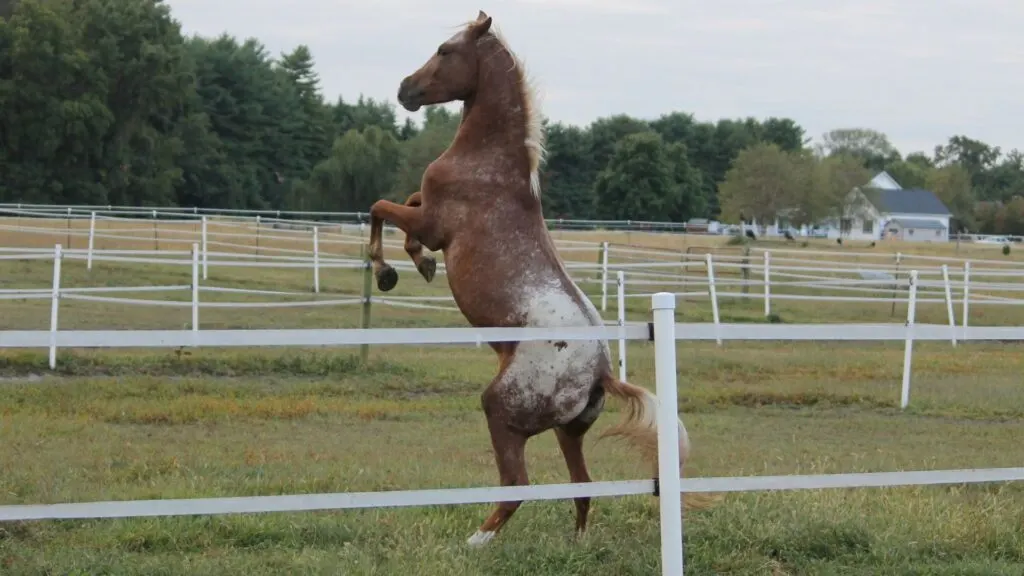
Historical and Cultural Role:
- Originating with the Nez Perce Native American tribe, Appaloosas were bred for their strength, endurance, and distinctive coats.
Did You Know?
- Beyond their coats, Appaloosas often have other distinctive features, such as striped hooves, white sclera around the eyes, and mottled skin.
- The Appaloosa Horse Club, established in 1938, has helped to preserve and promote the breed, ensuring its place in equestrian cultures worldwide.
White Horses

- True white horses are rare, with a completely white coat, pink skin, and often blue or dark eyes from birth.
- Genetics: Often the result of a dominant white (W) gene, distinct from the graying process that can lead to a white-like appearance.
Grullo (or Grulla) Horses

- Grullo horses exhibit a smoky-blue to mouse-gray coat, with black points and often primitive markings like a dorsal stripe.
- Genetics: The result of the dun dilution gene acting on a black base coat, highlighting the dun’s impact on dark colors.
Cremello

- Features a pale cream or white coat with blue eyes, often mistaken for white due to its light appearance.
- Genetics: The presence of two cream genes on a chestnut base dilutes the red pigment to a pale cream.
Perlino

- Perlino horses are similar to cremellos but with a bay base coat, resulting in a cream or light tan coat with pale blue eyes, and often with reddish or rust-colored points.
- Genetics: Carries two copies of the cream dilution gene on a bay base, affecting both red and black pigments.
Brown:
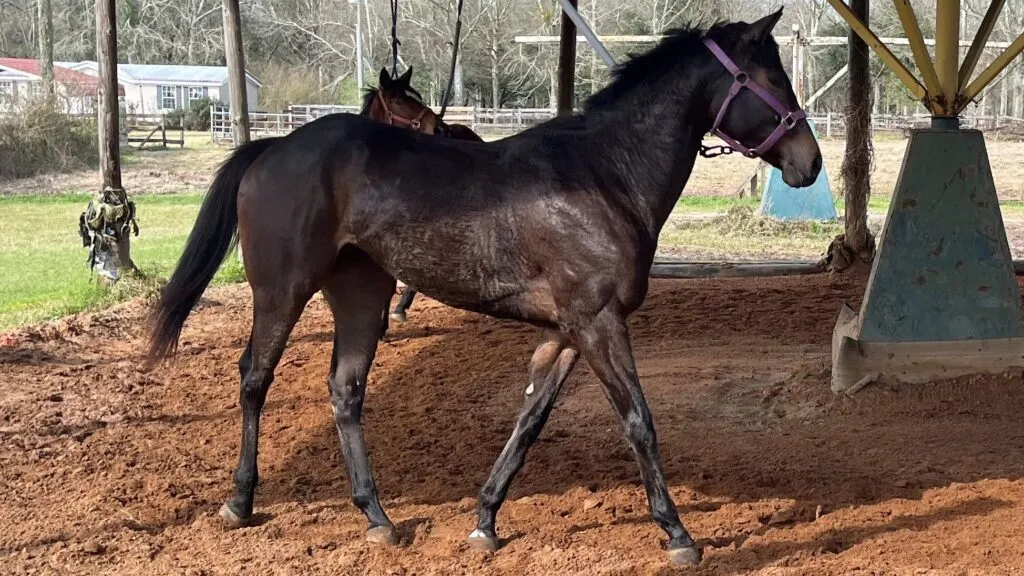
- A dark brown coat is often mistaken for black, with lighter areas around the muzzle, eyes, flank, and inside the legs.
- Genetics: A variation of the black gene influenced by the Agouti gene, allowing some red to appear, creating the brown hue.
Rare and Unique Colors
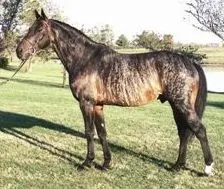
In addition to the well-known horse colors, some equines exhibit rare and fascinating color patterns that are worth noting:
- Brindle: Characterized by a striped pattern across the coat, brindle is exceedingly rare in horses and captures the imagination with its distinctiveness.
- Pearl: This unique color arises from two copies of the pearl gene, often manifesting in combination with the cream gene to produce a soft, apricot hue. Pearl coats are a testament to the genetic diversity present within horses.

White Markings and Patterns
White markings and patterns bestow unique signatures upon a horse’s coat, captivating onlookers with their distinguishing features.
Facial Markings
Facial markings imbue horses with distinctiveness and personality, serving as natural identifiers. Key types include:
- Star: A white marking on the forehead, variable in shape and size, often located between or just above the eyes.
- Stripe: A narrow, elongated white marking along the bridge of the nose, with varying length and position.
- Blaze: A broader white stripe extending down the face, from forehead to muzzle, sometimes covering the nasal bones’ full width.
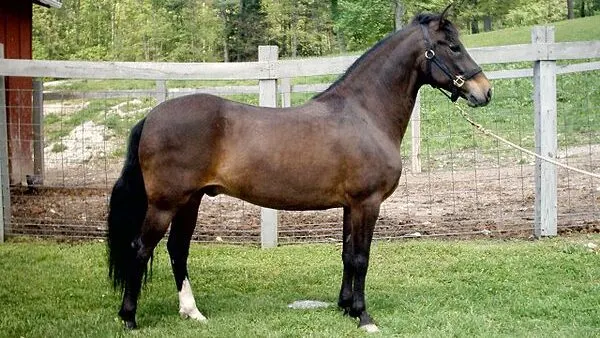
Leg Markings
White leg markings not only enhance a horse’s appearance but also aid in identification. Common examples are:
- Coronet: A white band around the coronary band at the hoof’s top.
- Pastern: White covering the pastern area, named for its location.
- Sock: White extending from the hoof to cover the fetlock, resembling a short sock.
Other Body White Markings
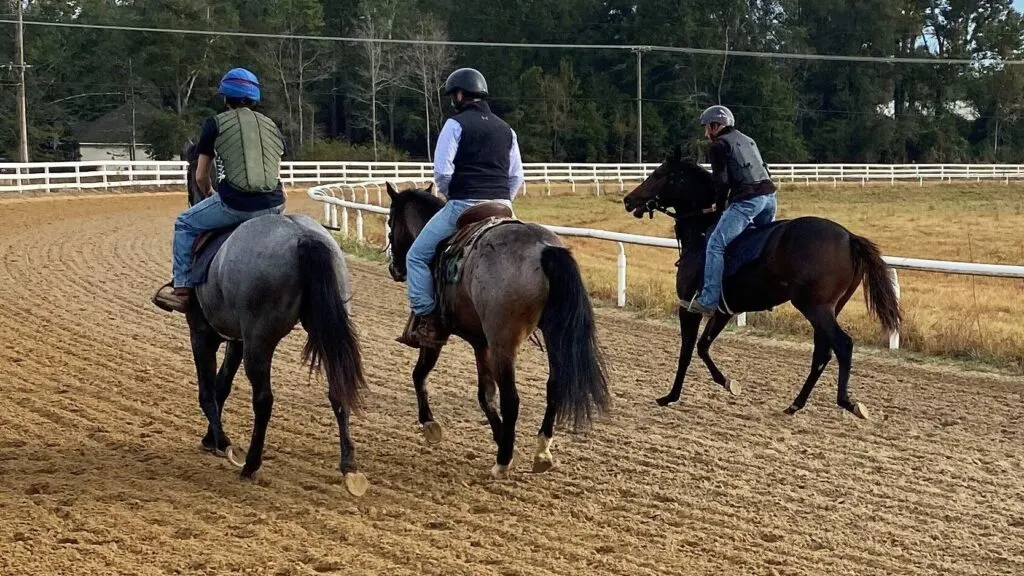
The allure of a horse can be magnified by various random and patterned white markings across its body:
- Birdcatcher Spots: Small, round, white spots that can appear anywhere on the body, not linked to a specific gene.
- Rabicano: Characterized by white hairs mixed into the coat, often seen along the flank and tail head, known as “ticking,” however, locally, we call this a coon tail.

FAQs on Horse Colors and Genetics
What determines a horse’s coat color?
A horse’s coat color is determined by its genetics. Specific genes inherited from both parents interact to produce the horse’s coat color, including basic hues and more complex patterns.
Can two horses of the same color produce a foal of a different color?
Yes, depending on the genetic makeup of the parents, two horses of the same color can produce a foal of a different color. This is due to the presence of recessive genes that may not be expressed in the parents but can combine to express a different color in the offspring.
What are the basic horse colors?
The basic horse colors include bay, black, and chestnut. Each of these colors can have various shades and may be influenced by dilution genes to create different hues.
What is a dilution gene, and how does it affect horse color?
A dilution gene lightens the base coat color without altering the basic pattern. Examples include the cream gene, which can produce palominos and buckskins, and the dun gene, which adds primitive markings to a lighter coat.
Conclusion
Exploring horse colors reveals a fascinating blend of genetics, heritage, and artistry. From the basic hues of bay, black, chestnut, and gray to intriguing dilutions and patterns like palomino, dun, and roan, each color carries its own genetic story and significance.
This knowledge isn’t just for breeders but for every horse enthusiast, rider, and caretaker, enhancing our appreciation and connection with these magnificent animals. It informs breeding choices, enriches selection for disciplines, and deepens our bond with horses.
Call to Action:
- Learn More: Seek out resources on equine genetics to understand the science behind each color.
- Join Communities: Engage with horse breeding forums and social media groups to share insights and learn from others.
- Visit Shows: Attend horse shows and events to see the variety of colors and patterns in person.
Let’s continue to celebrate and explore the diverse beauty of horses, enriching our experiences and ensuring the well-being of these noble creatures.
Join the Conversation!
Have thoughts on horse colors you’d like to share? Curious about a specific pattern or genetic trait? Drop your comments or questions below! Whether you’re a seasoned equestrian, a breeding expert, or just starting your journey into the world of horses, we’d love to hear from you. Let’s learn from each other and build a vibrant community of horse enthusiasts.
Sources and Further Reading
For those interested in exploring the genetics of horse colors further, the following resources provide authoritative information and genetic testing services:
- Veterinary Genetics Laboratory, UC Davis: Offers comprehensive insights into equine coat color genetics, including the base coat colors and the effects of dilution genes and white spotting pattern genes. Visit their website for detailed information and genetic testing options.
- “Equine Color Genetics” by D.P. Sponenberg and R.R. Bellone: This book is a valuable resource for understanding the complexities of horse coat color genetics and its implications for breeding and management.
Meet Miles Henry
An avid equestrian and seasoned racehorse owner, Miles Henry brings his extensive experience to the equine world, proudly associating with the AQHA, The Jockey Club, and various other equine organizations. Beyond the racetrack, Miles is an accomplished author, having published various books about horses, and is a recognized authority in the field, with his work cited in multiple publications.
🔗 Connect with Miles:
Twitter
Facebook
YouTube: Check out race highlights, horse care tips, and more!
